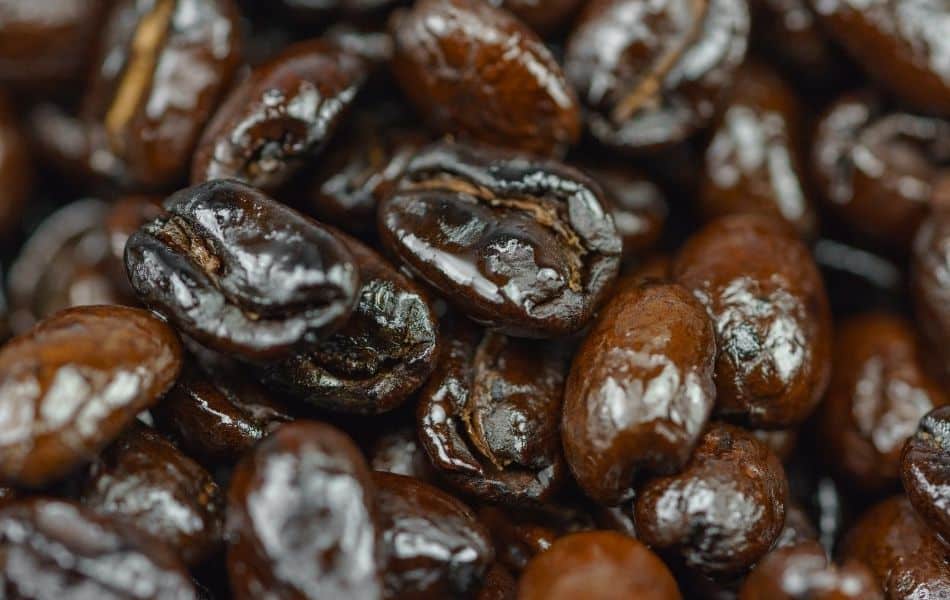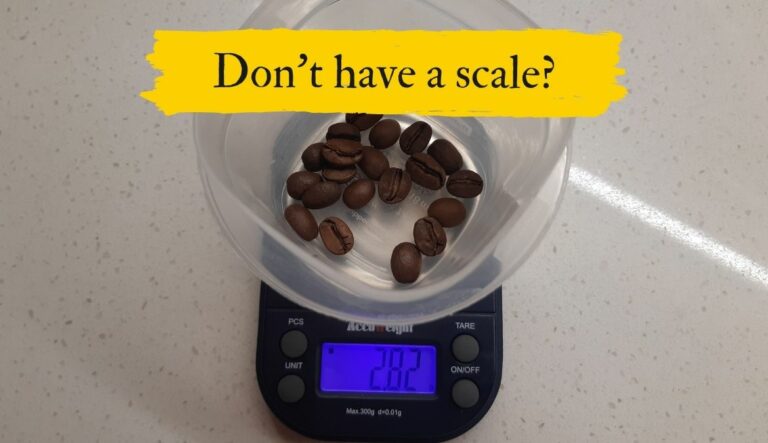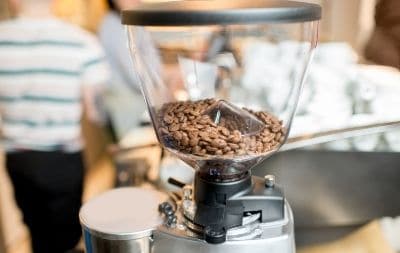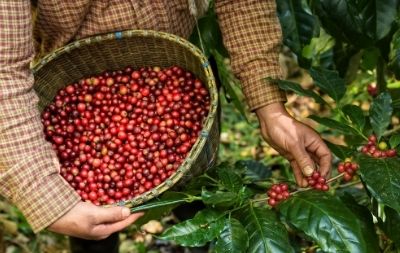If you’ve purchased different brands of coffee you might have noticed that some beans are more oily than others. I was curious to learn why this happens and how to dry oily beans without losing any flavor. Here’s what I discovered.
How do you dry oily coffee beans? Dry oily coffee beans by mixing them with a drier and lighter roast to absorb excess moisture. Rinsing or towel drying beans will remove many of the flavors and will cause the coffee to taste watery. Some oil is natural, but too much oil could be an indication they have gone bad.
I was a little surprised to learn why coffee becomes oily and how to prevent it. Read on to learn more.

The best way to dry oily coffee beans
The best way to dry oily dark roast coffee beans is to simply mix them with a lighter roast. Put both bean types in an airtight ceramic container and swirl the container around and mix the beans together. Over time, the less-oily light roast beans will take on some of the oil from the oily dark roast beans. The oiliness will even out.
Make sure to store your beans in a cool and dry place to prevent spoilage. Also, it’s best to store them in an opaque container to prevent photodegradation caused by UV light.
The worst way to dry oily coffee beans
Many people consider rinsing their coffee beans under a sink or simply patting them dry with paper towels. This will certainly make your coffee beans less oily but will remove many of the delicious flavors and aromas.
This will cause your brewed coffee to taste watery or hollow, similar to as if you under extracted them. These oils are naturally occurring in coffee beans and are responsible for producing the tasty flavors we enjoy in a drinkable beverage.
Why coffee beans become oily
All coffee beans naturally contain oil. The amount of oil you see on your beans depends on a few factors including where they are harvested from, how they are roasted and how you store them.
First of all, the chemical makeup of coffee changes based on where in the world it’s grown. Coffee grown in Ethiopia will have a slightly different amount of sugars, fats and carbohydrates compared to coffee grown in Costa Rica. Therefore, every type of coffee will have varying levels of natural oiliness. But this is usually not a major cause of oily coffee beans.
One of the most common reasons for oily coffee is how long it has been roasted for. Dark roast coffee, which undergoes a longer roasting period than light roast coffee, draws more lipids to the bean surface. These lipids are what makes the beans appear and feel oily.
The roasting process also causes CO2 to escape the coffee bean shell, which then reacts with oxygen and forms an oil. This oxidation process happens quickly when beans are being roasted. But even after they have finished roasting, this oxidation will continue slowly over time, causing old beans to become oily as well.
Lastly, storing coffee beans in a warm and humid place will cause them to sweat and produce an oily appearance. This will cause your beans to become moist rather than oily. But it gives an oily-looking appearance which can be easily mistaken.
Moist beans are especially bad because they spoil more quickly and can even cause mold to form inside your storage container. Besides the obvious health concerns, these beans will likely produce a poor tasting brew as well.
How to prevent oily coffee beans
Buy fresh beans
Start by buying beans that have been roasted no longer than 3 weeks prior. Coffee beans typically only remain fresh for around 5 weeks, depending on if it has been previously opened and how it has been stored. The closer to the roasting date you can buy the better.
I recommend Googling local coffee roasters nearby. Although coffee beans are grown in certain countries, they are often roasted locally. Most cities will have many coffee roasters. These freshly roasted beans will have less oil due to less oxidation (and they will also taste better as well).
If you take a look at the bag of coffee in your pantry, you might notice that there is no “roasted on” date. This is common among many mass-produced coffee manufacturers. This allows them to keep their product on the shelf longer. I recommend avoiding coffee without a roast date altogether because they are more likely to be past their ideal freshness, which means they are more likely to be oily.
I also recommend avoiding coffee that only has a “best before” date instead of a “roasted on” date. A “best before” date provides no indication of how fresh the coffee is or when it was roasted. It’s usually up to the manufacturer to determine what an appropriate best before date is, which could vary depending on the company. Buying coffee close to its “roast date” will prevent you from getting oily beans caused by oxidation.
Buy a lighter and less oily roast
Lighter roast coffee undergoes a shorter roasting period, which means fewer lipids are drawn to the surface of the bean and less oxidation has occurred. These types of beans will naturally be less oily than a dark roast.
Light roast coffee will taste quite a bit different if you’re used to drinking dark roast coffee, so consider trying a medium roast before jumping straight to a light roast.
Store your beans in a dry and cool place
Heat, moisture and light will cause your coffee beans to spoil more quickly and can be a cause of oiliness. In particular, storing your beans in high humidity will increase the risk of them becoming oily. This is particularly bad because this will cause your beans to not only feel oily, but taste bad as well.
When to dry oily coffee versus when to buy new coffee
A little bit of oil is natural and common among dark roast coffee. This is normal. The longer a coffee bean is roasted, the more oily it becomes.
However, coffee that is too oily will spoil more quickly. An indication of too much oil would be if there are visible droplets of moisture or the beans are sticking together. A normal amount of oil will give your coffee beans a shiny appearance, but there should still be a visible texture to the beans.
If you’re not sure and are concerned about the oiliness of your coffee beans, I recommend throwing them out and purchasing a fresh batch.






